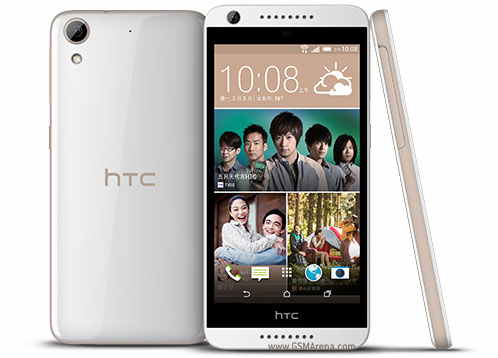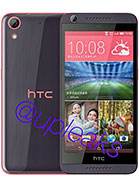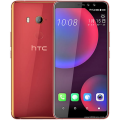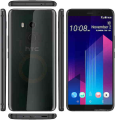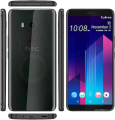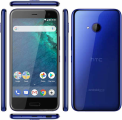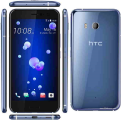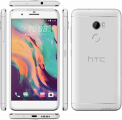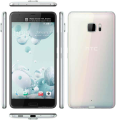HTC Desire 626 Prices
Important Note.
- All prices are in Pakistani Rupee (PKR)
- Prices may vary at stores and our effort will be to provide you with the updated prices.
- The latest price of HTC Desire 626 was obtained on 17 مئی, 2019. The prices at the original stores had been updated on the respective mentioned dates.
- Find out WhatMobile price has dropped in Pakistan by selecting Notify Price Drop button
- Find out WhatMobile has better specifications by clicking Add To Compare Button find out what Mobile has better reviews by visiting our reviews section
- Find out WhatMobile is cheaper on which retailer by clicking Compare prices from retailers button
Search Terms
- HTC Desire 626
Specifications
| GENERAL | |
| 2G Network | GSM 850 / 900 / 1800 / 1900 |
|---|---|
| 3G Network | HSDPA 900 / 2100 |
| 4G Network | LTE 900 / 1800 / 2100 / 2600 (Bands 1, 3, 7, 8) |
| Sim | Single SIM (Nano-SIM) or Dual SIM (Nano-SIM, dual stand-by) |
| Announced | 05/01/2015 |
| Status | Exp. release 2015, Q2 |
| BODY | |
| Dimensions | 146.9 x 70.9 x 8.2 mm (5.78 x 2.79 x 0.32 in) |
| Weight | 140 g (4.94 oz) |
| DISPLAY | |
| Display Size | 5.0 inches, 68.9 cm2 (~66.2% screen-to-body ratio) |
| Resolution | 720 x 1280 pixels, 16:9 ratio (~294 ppi density) |
| MultiTouch | Yes |
| SOUND | |
| AlertTypes | Vibration; MP3, WAV ringtones |
| LoudSpeaker | Yes |
| 3.5mm jack | Yes |
| MEMORY | |
| CardSlot | microSD, up to 32 GB |
| Internal | 16 GB, 1/2 GB RAM |
| DATA | |
| GPRS | Yes |
| EDGE | Yes |
| Speed | HSPA, LTE |
| WLAN | Wi-Fi 802.11 a/b/g/n, dual-band, hotspot |
| Blue Tooth | v4.0, A2DP, apt-X |
| USB | microUSB v2.0 |
| CAMERA | |
| Camera Primary | 13 MP, 4128 x 3096 pixels, autofocus, LED flash |
| Camera Features | Geo-tagging, touch focus, face detection, panorama |
| CameraVideo | 1080p@30fps |
| CameraSecondary | 5 MP |
| FEATURES | |
| Processor Cores | Quad-Core |
| OS | Android OS, v4.4.4 (KitKat) |
| CPU | Octa-core 1.7 GHz Cortex-A53 Quad-core 1.2 GHz Cortex-A53 |
| Sensors | Accelerometer, proximity, compass |
| Messaging | SMS(threaded view), MMS, Email, Push Mail, IM |
| Browser | HTML5 |
| Radio | TBC |
| GPS | Yes, with A-GPS |
| Java | Yes, via Java MIDP emulator |
| Colors | Black, White |
| Others | - MP4/H.264 player - MP3/eAAC+/WAV player - Photo/video editor - Document viewer |
| BATTERY | |
| Battery | Li-Ion 2000 mAh battery |
| StandBy | Up to 800 h (2G) / Up to 761 h (3G) |
| TalkTime | Up to 20 h 30 min (2G) / Up to 30 h (3G) |
| MISC | |
Reviews
Introduction and design
It's getting hard to keep up with HTC's Desire range, with so many handsets arriving and just a three-digit number to tell them apart. The HTC Desire 626 is a successor to the HTC Desire 620, and while its forgettable name doesn't do it any favours there's a lot to like here, at least on paper.
For one thing the specs have had a significant upgrade, with a better camera, more RAM and more storage all included. Yet you won't pay much of a premium for the Desire 626, which comes in at £169.99 (US$179.99, around AU$257), making it just £20 (roughly US $30, AU$40) more than the Desire 620.
It ticks a lot of boxes too, from its 5-inch 720p screen to its 13MP camera and customisable interface. All of which marks it out as a clear rival to the similarly well-equipped and almost identically priced Motorola Moto G. Which is no bad thing, as Motorola's phone is one of the best budget handsets available.
But there's more to a phone than specs – it needs to deliver on those specs and come together as a cohesive whole, so does the HTC Desire 626 manage that?
Design
I received two versions of the HTC Desire 626 for review: one with a funky light blue edge sat between a dark blue front and rear and another slightly more understated model, with a light brown edge sandwiched between a shiny white front and back.
The two-tone colour scheme is nothing new for HTC, which rolled out a similar design on the likes of the HTC Desire Eye, and a more premium metal-clad version for the HTC One M9.
It's not a bad look for a budget phone, especially the blue version, but the soft-to-the-touch plastic feels smooth to the point of being a little slippery and doesn't provide a huge amount of grip, while both colours pick up visible fingerprints and smudges.
The phone also feels slightly creaky. Not like it's going to break, but as though there hasn't been a huge amount of care and attention put into its construction, as it flexes slightly and makes creaking sounds when it does.
Still, the rounded corners and soft-touch feel ensure it sits fairly comfortably in the hand. It's also possible to reach all the buttons without having to adjust your grip much – and I say that as someone with quite small hands.
I found the button placement took some getting used to though. Both the volume and power buttons are on the right edge, but the volume buttons are above the power key, which never feels natural to me.
They are at least very different sizes, so your fingers can easily find the right one, and after a couple of days I started to get used to the position, but it never quite felt right.
While the Desire 626 is small enough to hold one-handed it's not as compact as you might expect for a 5-inch phone, as there are large bezels above and below the screen. These are necessary in part to house the speakers, but as with other HTC phones there's also a black strip just below the screen that has no obvious function.
Don't be fooled by those speakers either. They might look like BoomSound ones, but only the bottom one is actually used for media, and while it can pump out a decent amount of volume there's none of the crispness you get from HTC's pricier handsets.
Unlike with some plastic phones you can't remove the back of the HTC Desire 626, which means there's no getting to the battery. There's a cover on the left edge which can be slid away to access the microSD and SIM card slots.
As the Desire 626 has been upgraded from the 8GB of storage in the Desire 620 to 16GB here a microSD card isn't quite so vital, but it gives you a lot more room to manoeuvre.
- Thank you to Carphone Warehouse for providing the review unit
Key features and performance
Key features
While the HTC Desire 626 doesn't go quite as deep into hardware customisation as the Moto G, it does have a few different and distinct colour schemes, which help it stand out.
As well as those it also goes in for plenty of software theming, enabling you to change the look of your home screen right down to the sound effects, fonts and icons.
Although Android is endlessly customisable anyway, it's rare that you find so many tools built in by a device manufacturer – instead you have to venture into the depths of Google Play to find what you need. So this is a fast, easy way to make the phone your own.

Interestingly, you can also create your own themes, with colour schemes selected based on your wallpaper. That's not the end of the customisation either, as the Desire 626 also has a home screen with different profiles for whether you're at home, work or out.
Which one of these is selected will determine which apps are presented to you, which is handy if you tend to use different apps in different places.
The phone takes a stab at guessing which apps you'll want for each situation, but you can always change them to your liking. Or just not use the feature at all – personally I prefer having a consistent home screen.

The Desire 626 isn't the only HTC phone with these features, but having access to them on a budget handset is nice, and they make what's already one of the most stylish Android skins that little bit better.
While I'm talking interface I should mention BlinkFeed, which is present and correct. Swiping left from your home screen brings up this ever-updating feed of content from social media and news sources of your choice.
It's great to kill a few minutes with, or check once or twice a day for anything that catches your eye, but BlinkFeed has never felt like a must-have feature to me. The content is limited, and you can get a similar experience from any number of apps.

The screen is worth highlighting too. There's a 5.0-inch 720 x 1280 display here, with a pixel density of 294 pixels per inch. That's a match for the Moto G, which is arguably its main rival, but beyond that it's also a good spec for the money, delivering sharp visuals and reasonably rich colours.
It's not the brightest screen I've seen though, which can be an issue on sunny days, when it becomes hard to see. There's also no mention of Gorilla Glass, so I'd be extra wary about dropping it.
Given the £169.99 (US$179.99, around AU$257) price of the HTC Desire 626 the other specs are more than reasonable too.
You get a 1.2GHz quad-core Snapdragon 410 processor, which is pretty standard at this price, but you also get 16GB of storage, 2GB of RAM, a 13MP rear camera and a 5MP front-facing one. That, again, is pretty much identical to the Moto G 3rd gen, which is king at this price.
Performance
The HTC Desire 626 runs Android 5.1, overlaid with Sense 7. I'd always rather have stock Android than a manufacturer's skin, but if I must have something on top Sense isn't a bad option.
It's not evolved all that much, although the theme store at least lets you make it your own, but to my mind it's an attractive interface, and when it comes to all-important navigation it's almost as easy to get around as stock Android.
On the Desire 626 it's also pretty speedy under the finger. The phone's working with a 1.2GHz quad-core Snapdragon 410 processor, which is a pretty standard entry-level chip, but it's been given a boost by pairing it with 2GB of RAM.
This gives the phone all the oomph it needs for day to day use. I didn't notice any lag when swiping around the home screens, and for the most part using apps was fine too.
There were some instances of slowdown though. Launching apps can sometimes take a few seconds, and at times there was a noticeable pause when jumping between tabs on Google Chrome.

I also found that the multitasking screen could take a few seconds to populate, although once it did actually jumping between apps on it was almost instantaneous.
These are very minor issues, and not ones that I'm surprised to see in a phone of this price; but they are noticeable, and you don't get the smooth experience you would with a higher-end handset.
Gaming on the Desire 626 generally proved pretty reliable. Real Racing 3 ran fine, except when 'achievements' popped up, which would cause a moment of lag, on one occasion almost causing me to crash out. Modern Combat 5 wasn't always silky smooth, but it remained perfectly playable, and less-demanding games posed no problem.
-420-90.jpg)
Games also look good on the sizeable and sharp 5.0-inch 720p screen. Plus, the phone never ran hot, so while an extended gaming session might give your battery a beating it won't fry the phone, or your hands.
Putting the Desire 626 through GeekBench 3 gave an average single-core score of 516 and an average multi-core score of 1544. That's a solid score, but not an exceptional one, even for the price – it's a little lower than the 1600-scoring BQ Aquaris X5, which also has 2GB of RAM, but has a slightly nippier Snapdragon 412 chip.

It's also marginally lower than the 1GB version of the Moto G. That phone averaged 1590, despite having half the RAM of the Desire 626 and selling for less. So I'd have liked to see a little more from the Desire.
Still, one thing I will give a shout-out to is call quality. This was fine throughout, with calls coming in loud and clear.
Battery life and camera
Battery life
Sadly, the battery life of the HTC Desire 626 is no great shakes. The 2000mAh power pack inside gets things off to a bad start, as it's significantly smaller than the 2470mAh battery in the Moto G, or the 2900mAh unit in the BQ Aquaris X5. It's even smaller than the 2390mAh battery in the lower-end Moto E.
That's not necessarily the end of the world, as HTC could have used some fancy tricks and optimisation to eke impressive performance out of the Desire 626 – but sadly it hasn't.
In our patented (not actually patented) battery test, which involves playing a 90-minute video at full brightness, the battery dropped by 30%. That, as you'd probably expect, is worse than most rivals; the Moto G dropped 19% and the BQ Aquaris X5 lost just 14%.
The Desire's loss is in line with some other recent HTC phones, including the high-end HTC One M9, which dropped a massive 31%, but it's not good.

Things were a little better in daily use, but still hardly impressive. With the screen set to a mid-level brightness, around 20 minutes of Real Racing 3 knocked 8% off the battery.
A full mixed day of use, with about an hour of social media, firing off a dozen or so photos, sending a handful of SMS and WhatsApp messages, 30 minutes of web browsing and a short call cut the battery from 100% at 8:30am to 36% at around 11:30pm.
It got me through the day then, with a little bit of room to spare, but that was a middling day; push it with a lot of screen time and you'll be reaching for a charger before the end of work.
You also can't remove the battery, and of course there's no fast or wireless charging here. The 626 does, however, offer HTC's two battery-saving modes.
There's 'Power saver', which cuts down CPU usage, limits location services, reduces screen brightness and turns off vibration to keep the phone going a little longer.
It works, to an extent, but I didn't notice a drastic difference in my time with the phone, and dialling back the CPU on an already low-end handset isn't exactly desirable.
Then there's 'Extreme power saving mode', which turns off data when the screen is off and limits you to using the phone, SMS, email, the calendar and the calculator – in other words it turns your smartphone into a feature phone, so that's an option you'll only want to use in real emergencies.
Camera
There's a 13MP snapper on the back of the HTC Desire 626, which on paper is a solid spec and in line with the Moto G 3. But where the Moto G can take great shots for a phone in this price range, the Desire 626's photos are rather underwhelming.
Photos have a tendency to look dark, washed out and lacking in detail. The camera is at least speedy to use though – once it's launched, that is. Opening the app can take a few seconds, but the shutter speed is fast, so you can fire off a lot of photos quickly.

There's also not too much clutter on the viewfinder, with most of the options remaining hidden until you need them.
Not that there are a vast number of options, but the basics are covered, from ISO and exposure to an ineffective night mode and slow-to-shoot HDR mode, plus an option to use the volume buttons to either zoom or take photos.
The 5MP front-facing camera is pretty standard for a phone of this price. The results won't wow you, but they're social media-worthy, and with a voice capture option and a timer you can actually be in group photos you take.
Camera samples

Click here for the full-resolution image

Click here for the full-resolution image

Click here for the full-resolution image

Click here for the full-resolution image
Verdict
The HTC Desire 626 is gunning for Motorola's crown, and on paper it's got a good shot, with a big, sharp screen, 2GB of RAM, a 13MP camera, a stylish design, a customisable look and a similar price.
However, despite solid specs and a reasonable price tag it can't match the Moto G. It might look similar on paper, but while its screen is moderately impressive and performance is usually smooth, its camera capabilities are lacking in practice and its battery is far too small.
We liked
The Desire 626 has a colourful, customisable design both inside and out, with the look of the interface in particular being hugely customisable. If you like making a phone your own, you'll like that about it.
It also offers generally pretty solid performance, and a crisp 720p screen which does a good job of showing off games and media.
A competitive price helps the Desire 626 too. At £169.99 (US$179.99, around AU$257) it's in budget phone territory, and only slightly more expensive than the HTC Desire 620.
We disliked
The camera is a real disappointment. I was hoping for good things from Desire 626, given the 13MP sensor, but actual results were flat and lifeless.
The phone also has an underpowered battery. It will last you through a day of mixed to moderate use, but push it harder and it'll be crying out for a charger before night falls.
There are a frustratingly large number of phones I could say the same about, but as you can also get a much better battery for the same money it's not something the Desire 626 can get away with.
While performance is generally solid the phone benchmarks a little low, and while the colourful design is nice the build quality feels slightly creaky.
Verdict
The HTC Desire 626 ticks a lot of boxes, matching rivals for specs and packing it all into a colourful, eye-catching shell without pushing the price up.
But it's a phone that doesn't quite live up to its billing. Like the build itself, the handset doesn't quite deliver in the way I'd hoped, particularly when it comes to the camera and battery life.
The screen at least is decent, and it's generally smooth under the finger, but even here there are caveats, with a lack of brightness and occasional slowdown holding the phone back.
I don't want to be too hard on the Desire 626 because on the whole it wasn't frustrating to use, even coming from a higher-end handset – but the competition is just too keen for me to wholeheartedly recommend it.
- Thank you to Carphone Warehouse for providing the review unit
First reviewed: January 2016
Write Your Own Review
My Recent Reviews
- Be first to post review for this product.
comments powered by Disqus




